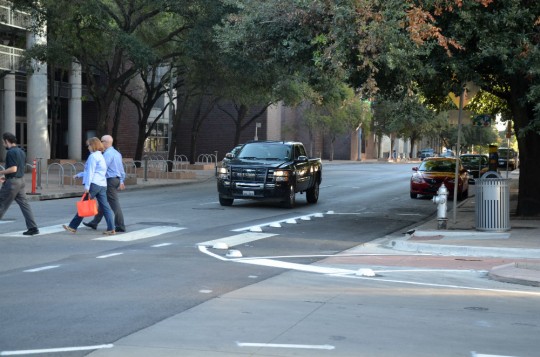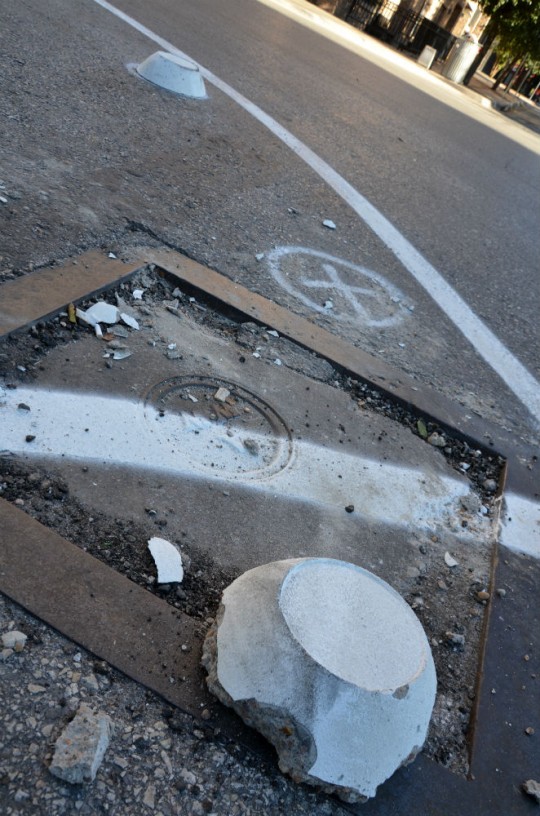Austin, where I spent a few days this week, is not yet a great city to bike in. But some of the ideas it’s developed in its bid to become one are useful, and here’s one.
Crosswalk curb extensions are great. By visually narrowing intersections, they slow traffic, prevent high-speed turns, and shorten distances for people crossing on foot.
But for future bike infrastructure, they’re a problem, especially in cities like Portland that have built a lot of them. They stop it from being cheap and easy to create parking-protected bike lanes by swapping curbside parking with a door-zone bike lane. When Portland installed curb extensions this year on Northwest Broadway, many people who’ve been hoping for a protected bike lane there groaned — it seemed like a strong sign that the city was giving up on that possibility.
(For its part, the Portland Bureau of Transportation says curb extensions won’t be extremely expensive to tear back out if Broadway is selected for improvements.)
In any case, Austin has started using a quick and dirty trick to create curb extensions: five-inch-high concrete domes, arranged to create a pedestrian refuge area.
The original mold had a humble origin, Austin bikeway engineer Nathan Wilkes said.
“One of our public works managers bought salad bowls at the dollar store,” he said.
Advertisement
They work. Stormwater flows easily around them. People biking can easily avoid them, assuming the placement is careful and the lighting is decent. They’re mountable, so a truck that really needs the space can drive over them, but big enough that people driving will usually avoid them. And (at least as the rules are being read in Austin) they don’t trigger a requirement for new building or stormwater permits, so they can be added quickly and cheaply.
They wouldn’t do well with snowplows. But in Austin (as in Portland) that’s very rarely a problem.
Seattle, another city that’s growing very fast and working hard to change its streets to match, has actually been using a similar trick with plastic posts and thermoplastic coating:
Like Seattle’s flexible posts, Austin’s low bumps have a downside: they’re fragile.
I’m told that Austin plans to address this by sinking bolts down the middle of the concrete domes, reinforcing the glue that is currently holding these in place.
Because installation is so simple and unobtrusive, these may also become Austin’s most common treatment for protecting bike lanes. City Transportation Planning and Policy Manager Art Pearce, who is also in Austin this week for a National Association of City Transportation Officials conference, mentioned that he was looking at 3rd Street for ideas about how people walking can be well-served by protected bike lanes. Sounds like a good idea.






